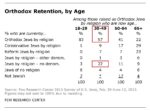
When my father wanted to share an album of captioned photos with a colleague, he used to be able to simply send them a link in an email. This no longer works since the captions he saved in Picasa are not displayed in Google Photos! The solution I worked out for my father relies on Google’s Picasa application installed. So if you need this, go ahead, download and install the latest Picasa application. The rest of the solution is as follows: . . . → Continue reading: Preserving and Sharing Photo Captions from Picasa (before Google shuts it down)

Some people ask me about my last name. “Hey Aharon, where does your last name come from?” etc. It’s a question I’ve long wanted to know myself. I know Varady is a common Hungarian last name and I knew that it was probably something else before it became Varady (or Varadi as some living relatives still spell it). . . . → Continue reading: Marcus Weisberg or Weissberger or Veiszberger… (d. 1880)

1913, Regina and Coleman
I look for them in the past and I find their remains, enough to resemble a person, even someone whose passions I can identify more than vaguely with my imagination. Again, I have this feeling that the historical researcher is more than part necromancer. Not only do we create . . . → Continue reading: Reszi Sunshine (1885-1970)

Some self-reflection on community identity spurred by a conversation on the Pew Survey (2013). . . . → Continue reading: Community Identification

“A human being without the proper empathy or feeling is the same as an android built so as to lack it, either by design or mistake. We mean, basically, someone who does not care about the fate which his fellow living creatures fall victim to; he stands detached, a spectator, acting out by his . . . → Continue reading: Happy Birthday Philip K. Dick
For posts with multiple contributors in Wordpress, showing multiple names in the byline requires some hacking. One must install the Co-Authors Plus plug-in and then edit the code for their particular Wordpress theme. Documentation written by Daniel Bachuber, the author of the Co-Authors Plus plugin is located here. For those using the Atahualpa theme in Wordpress, documentation is uneven, incomplete, and hard to come by. Hopefully, this post will provide more comprehensive guidance and save someone the time I spent I trying to figure this out. You can see an example of my solution in effect at the Open Siddur Project — check out the byline and multiple-author bios in this post. (Please share with me any improvements you might have to what I’ve written below.) . . . → Continue reading: Hacking the Atahualpa Theme for Showing Multiple Author Bylines and Bios with the Co-Authors Plus Plug-In in WordPress

From 2009-2010, I was a fellow of Yeshivat Hadar in the pilot year of its first year-long program of study. A couple months ago, Rabbi Jason Rubenstein, Dean of Students at Yeshivat Hadar, asked me if I would consider reviewing Mechon Hadar’s new website. At the Hadar reunion earlier this year, Jason had provided a . . . → Continue reading: Mechon Hadar is Open

Haikus offered in commentary to Parashat Pinḥas 2011-2014, originally for Avi Strausberg’s Torah Haiku project. . . . → Continue reading: Pinḥas Haiku Iterations

Since we all live under the current terms of each of our respective nation’s copyright laws, simply making something available or accessible over the Internet doesn’t make it free under copyright for others to use and improve upon. That’s why open content licenses exist: to abrogate the restrictions imposed by copyright law, and it’s why we need to use them. . . . → Continue reading: SHARE WHAT YOU LOVE ♡ A Decision Tree for Choosing Free-Culture Compatible Open Content Licenses for Cultural & Technological Work

American Jewish World Service does important work, so when a site they built for educators and learners to access Jewish sourcetexts on social justice and other important activities disappeared overnight due to what appeared to be a domain registration lapse, I was motivated to write an essay on how organizations can appreciate their websites as more than “proprietary and Copyrighted marketing assets to better leverage their brand.” eJewishPhilanthropy, a well-read blog popular among Jewish professionals published it this morning. Here’s a snippet: . . . → Continue reading: Teach me your Open Source Torah, on one foot
|









